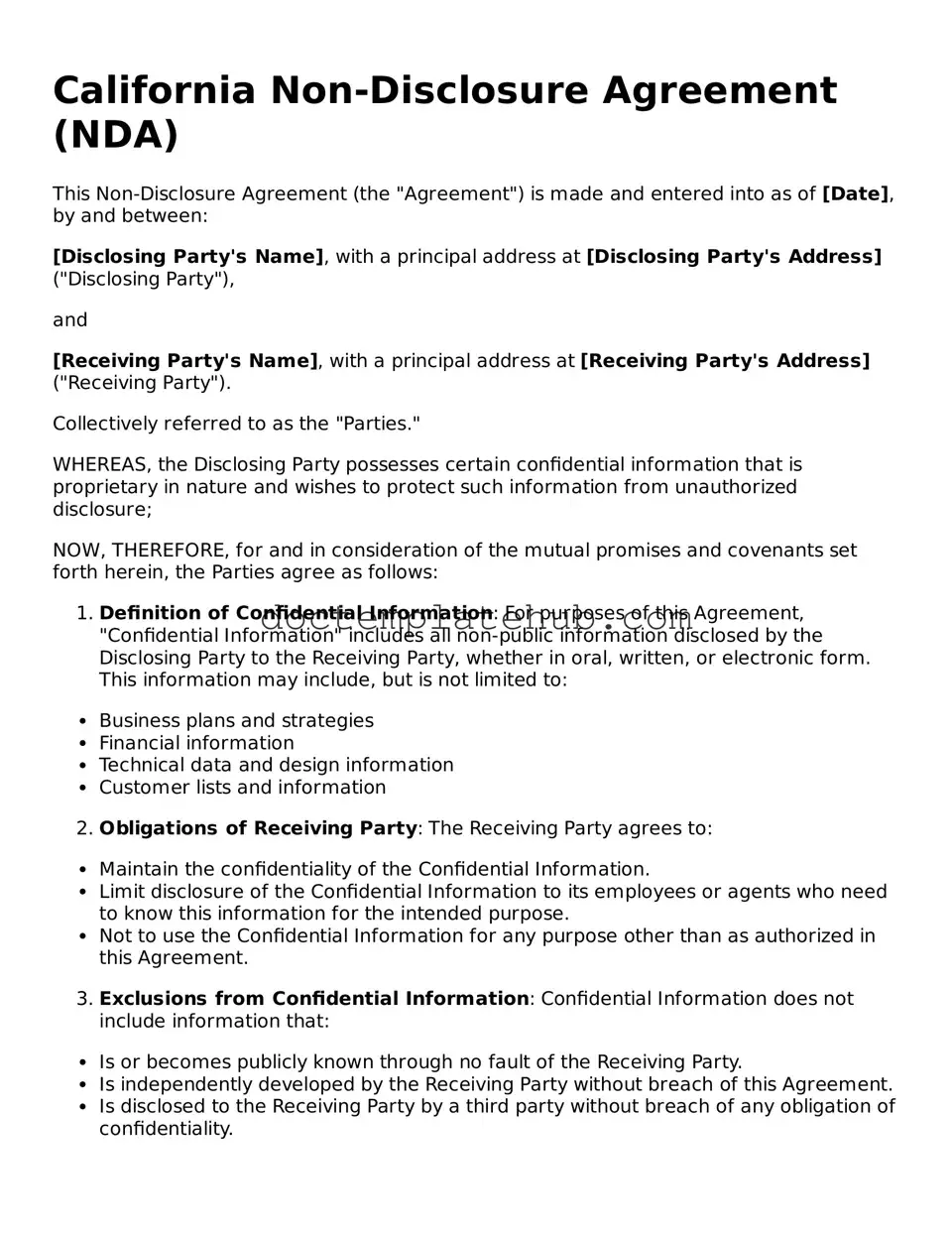What is a California Non-disclosure Agreement (NDA)?
A California Non-disclosure Agreement is a legal contract designed to protect confidential information shared between parties. It ensures that sensitive information, such as trade secrets or proprietary data, remains private and is not disclosed to unauthorized individuals or entities.
When should I use a Non-disclosure Agreement?
You should consider using an NDA when you plan to share confidential information with another party. This could be during business negotiations, partnerships, or when hiring employees who will have access to sensitive data. An NDA helps establish trust and protects your interests.
Who can sign a Non-disclosure Agreement?
Any individual or entity can sign an NDA. This includes employees, contractors, business partners, or anyone else who may come into contact with confidential information. It’s important that all parties involved understand their obligations under the agreement.
What information is typically covered in an NDA?
An NDA usually covers information that is not publicly available and that provides a competitive advantage. This can include business plans, customer lists, financial data, marketing strategies, and technical specifications. The agreement should clearly define what constitutes confidential information.
How long does an NDA last?
The duration of an NDA can vary. Some agreements specify a set time period, while others may last indefinitely, especially if the information remains confidential for a long time. It’s essential to outline the duration in the agreement to avoid any confusion later on.
What happens if someone breaches the NDA?
If someone breaches the NDA, the affected party may seek legal remedies. This could include monetary damages, injunctions to prevent further disclosures, or even specific performance, which requires the breaching party to fulfill their obligations. The consequences are typically outlined in the agreement.
Can I modify a Non-disclosure Agreement?
Yes, NDAs can be modified to better suit the needs of the parties involved. Any changes should be documented in writing and signed by all parties to ensure that the modifications are enforceable. It’s a good practice to review the agreement periodically to ensure it remains relevant.
Is it necessary to have a lawyer review my NDA?
While it’s not mandatory, having a lawyer review your NDA can be beneficial. They can help ensure that the agreement is legally sound and that it adequately protects your interests. This is especially important if the information being protected is highly sensitive or if the agreement involves complex terms.
Can an NDA be enforced in California?
Yes, NDAs can be enforced in California as long as they comply with state laws. California courts generally uphold NDAs that are reasonable in scope and duration. However, if an NDA is deemed overly broad or restrictive, it may not be enforceable, so it’s crucial to draft it carefully.
